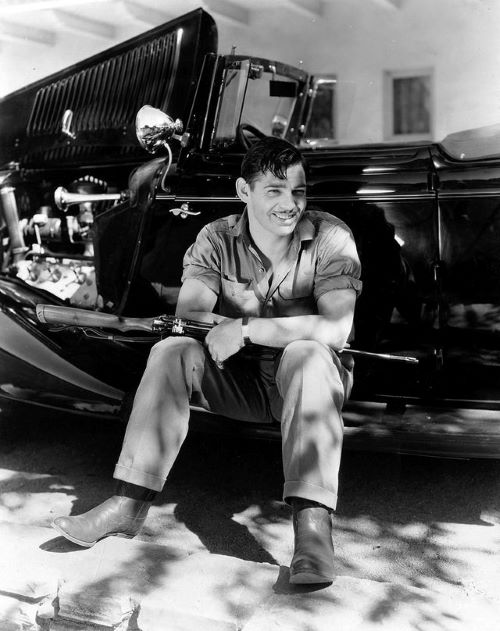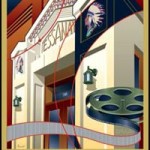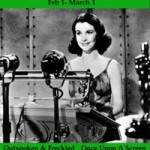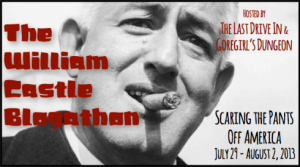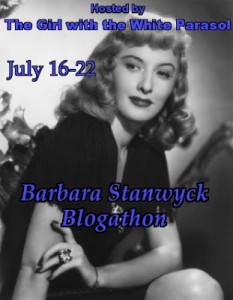“Your future’s all used up.”
Orson Welles was an architect of film noir before the style had even been identified. His debut release, Citizen Kane (1941), was revolutionary for the artform as a whole, but the film’s shadowy visuals and elaborate flashbacks had the biggest impact on the burgeoning postwar movement. Welles recognized how well his storytelling instincts melded with noir, making it no coincidence that his most notable bids for commercial success, The Stranger (1946) and The Lady from Shanghai (1948), were made explicitly in this style (the former was a mild success, the latter a notorious dud).
Touch of Evil (1958) is a different story altogether. Welles had already spent a decade as Hollywood’s persona non grata by the time the film came along, and the only reliable jobs he was able to book at the time were grandiose supporting parts. He was originally brought onto Touch of Evil as an actor and only an actor, and it took the suggestion of the film’s star, Charlton Heston, for Universal Studios to take him on as writer/director (they had previously struggled to find a suitable fit). Here he was, working with the biggest name in Hollywood, armed with an adaptation of a popular crime novel (Badge of Evil), and free to do whatever he wanted as long as he stayed on schedule. If ever a film looked to be a surefire hit.

The fable about the scorpion and the frog comes to mind when discussing Welles’ filmmaking approach. In the fable, the scorpion promises not to sting the frog so long as he allows him to cross the river on his back. The frog agrees, but the scorpion cannot help itself. It stings the frog, resulting in both of their deaths. Welles was a force of nature, and no matter how hard he tried to make a conventional film, he could never fully rein in his idiosyncrasies. Touch of Evil died a miserable death at the box office, much like the Scorpion, but its artistry is absolutely undeniable.
The opening shot of the film has become the stuff of legend. In a single, unbroken crane shot, the viewer is left to grip their armchairs and watch as a car bomb passes through a crowded bordertown street. It’s a technical tour de force, marrying tension, diegetic noise, exposition, and exquisite camera placement to establish the tone and rhythm of Welles’ scuzzy bordertown. If one had to pick a scene to encapsulate the filmmaker’s uncanny command of sight and sound, it would be this. You can practically smell the nighttime air as it passes.

Mexican special prosecutor Mike Vargas (Heston) and his newlywed wife Susie (Janet Leigh) are among the nearby denizens, and their witnessing of the explosion sets off a chain of events that ripple through the rest of the story. Vargas is forced to cut his honeymoon short to investigate the cause of the explosion, and Susie is left to fend off advances/threats from the notorious Grandi family.
Vargas’ investigation is complicated by the arrival of local police captain Hank Quinlan (Welles). The man is known for getting results, but his methodology has a reputation for being unethical and/or outright illegal. On the border, nobody looks too closely at the evidence, or whether it may have been planted. Quinlan chews up the scenery from the moment he enters, like so many bowls of chili at the gypsy tent. His grotesqueness is a manifestation of both his physical and moral decay, and the passing moments of clarity we glimpse only come about when he’s forced to reckon with what he’s become. He can’t even remember what decency feels like.

Welles is at his best when he’s tasked with playing boisterous men, and Quinlan certainly fits the bill. There are hints of the titular tycoon in Citizen Kane or the doomed Falstaff in Chimes at Midnight (1965), but what makes the Quinlan performance so exceptional is the way it’s tailored to fit the aesthetic of the rest of the film. Touch of Evil is a noir overflowing with discomforting camera angles and surreal, borderline nightmarish imagery. It’s akin to watching a funhouse mirror come to life, and Quinlan, with his blustering outbursts and uncouth monologues, reads like a corrupted soul that’s been reflected back through the same mirror.
Most audiences single out Heston playing a Mexican as the film’s lone weak point. The actor makes little effort to alter his star persona, save for the mustache and the slightly tanned skin (the term “brown face” had yet to be coined in Hollywood), but I’d actually say that he manages to hold his own against the napalm-like charisma of Welles. It was a wise decision not to have the actor attempt broken English, or tack on “senor” to each of his lines, and perhaps unintentionally, it adds a layer of subtext to the Vargas character.
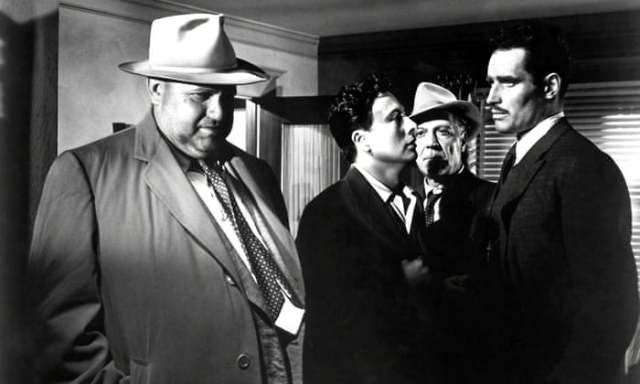
By presenting Vargas as a Mexican man who speaks English without an accent, the film furthers his disconnect from the Spanish speakers around him. Vargas spends the entire investigation torn between his fellow countrymen and the American lawmen; partially belonging to both without fully belonging to either. There’s not an overt payoff to the character’s identity crisis, but it adds immeasurably to the irony of Quinlan being more experienced when it comes to border crime.
From a visual standpoint, one would have to go frame-by-frame to pick out all of the film’s highlights. It’s one of the most inventive noir releases of all time, as it constantly finds new and different ways to present discomforting exchanges. The scene where Quinlan strangles Joe Grandi (Akim Tamiroff) takes the visual motif of the flashing neon sign to a horrific extreme, with the light only providing glimpses of Grandi’s bulging eyes.

The film’s conclusion alternates between extreme close-ups of Vargas and Quinlan that are so disjointed in presentation that they start to mirror the dulled senses of the latter. Kane may have been Welles at his most revolutionary, but Touch of Evil is Welles at his most flamboyant, and the results are unparalleled in their execution.
It may have died a horrible death upon release, but Touch of Evil has undergone a resurrection thanks to its lasting influence. Alfred Hitchcock borrowed generously from the film when it came time to make Psycho (right down to the use of Janet Leigh in a motel), and its hard to imagine the neo-noir works of David Lynch being the same were it not for slowly unraveling sanity of Welles’ yarn. It’s a film that provides something new each time out, and given how it pushes every trope and trick to the limit, it’s a worthy curtain closer for the classic noir period.
TRIVIA: Because of the studio’s lack of interference (at least, during production), Welles said that Touch of Evil was the most fun he ever had on a Hollywood set.
…..
-Danilo Castro for Classic Movie Hub
Danilo Castro is a film noir aficionado and Contributing Writer for Classic Movie Hub. You can read more of Danilo’s articles and reviews at the Film Noir Archive, or you can follow Danilo on Twitter @DaniloSCastro.























